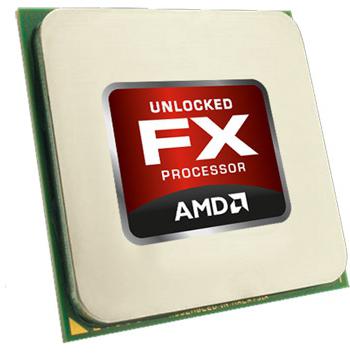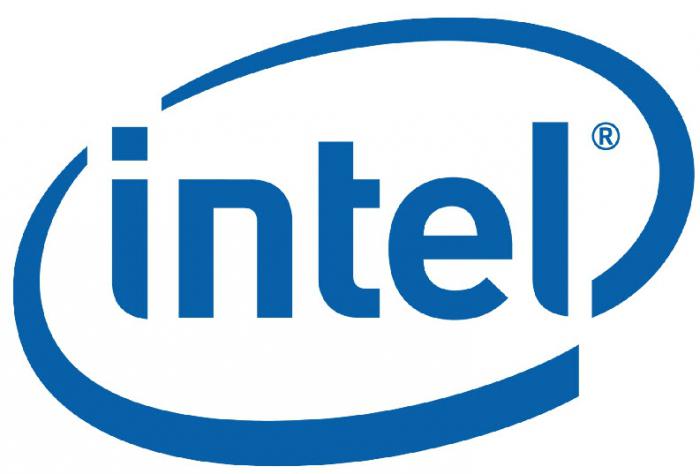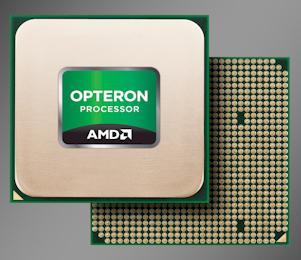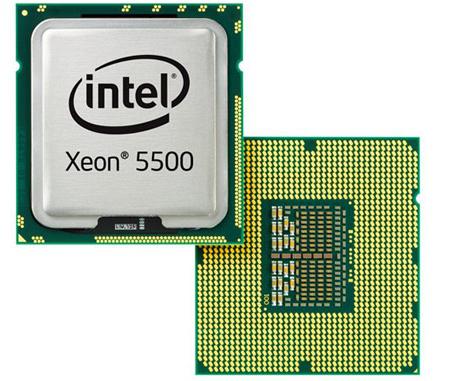Which processor is better: AMD or Intel. How to make the right choice?
The debate over which processor is better - AMD or Intel, has been going on for more than a decade. It would seem that the current state of affairs on the market eloquently indicates that the victory in the "cold war" between the brands of the two North American states was won by a company from the United States, that is, Intel. The firm now occupies more than half of the global processor market in all segments. Canadian AMD is moving away almost to the "third world" of microchip manufacturers, based on revenue figures. But in terms of technology, the "northerners" in no way, according to most experts, have never been fundamentally inferior to their counterparts from the "south". And today it is impossible to say unequivocally which of the firms holds the lead in terms of its "know-how". Which processor is better - AMD or Intel? By what criteria do chips from the USA outperform similar solutions from Canada and vice versa?
Strengths of Intel processors
Many IT professionals consider solutions from the American brand to be ideal for single-tasking - when only one active application (or game) is running. When a user operates a PC in the format, if you like, "single window".
In addition, a number of experts agree that the world's leading software manufacturers are adapting their products primarily for Intel processors. Which is not surprising given the current market positions of the Americans. As they say, a purely "democratic" principle: "software" is written under the "ruling" majority. It, according to marketers' reports, uses American chips.
Another indisputable advantage of Intel processors is their relatively low power consumption. This, according to some experts, is a direct consequence of better compatibility with games and applications. The processor does not have to "strain" too much to clearly process all the necessary data streams. As a result, the chips do not heat up so much and therefore do not require the installation of expensive cooling systems.
Overclocking factor
For many years, users, choosing which processor to buy - AMD or Intel, kept in mind a rather significant criterion - the "overclockability" of microcircuits. Many experts agree that, historically, it was the Canadian company that was more loyal to "overclockers" who dreamed of setting exorbitant frequencies on their chips - if only they would work faster. A significant percentage, if not most, of Intel's processors overclocked badly. Literally a few years ago, according to this criterion, we would have been entitled to put a fat minus on microcircuits from the Americans. But today we will put a plus. An increasing number of experts agree that Intel processors can "overclock" superbly. Especially those that are produced in lines with the letter K.
Among other advantages of Intel processors is fast interaction with RAM modules. In addition, their own memory, which is the "cache", as a rule, operates at a higher frequency than the one that is on similar microcircuits from AMD.
Cons of Intel processors
Finding out which is better - AMD or Intel, you should, of course, refrain from an excessive stream of laudatory reviews about any of the brands. And therefore now about the shortcomings of the "Americans".
The most important thing that experts and many users note, minus chips from Intel - installing a processor of a new line, as a rule, requires replacing the socket (the connector where the microcircuit is connected). This means that you need to change the motherboard (and sometimes other hardware components with it). First of all, these are additional financial expenses.
The next drawback is easy to "calculate", remembering one of the above advantages in the form of fast work in single-tasking mode. It is logical to assume, and experts say the same thing: Intel processors do not work efficiently enough if several applications are running at the same time (of course, we are talking about "demanding" programs, games, photo and video editors, etc.).
Price Factor
Intel processors, when compared with solutions of the same class as AMD, are considered by many experts to be more expensive. Not at times, of course, but on average by 15-17 percent. If we take a purely financial criterion, then the choice between which processor to buy - Intel Core i3 or AMD FX, may be difficult. These two classmate chips cost about the same. But if we compare the "giants" - Intel Xeon MP and AMD Opteron Dual Core, then American microcircuits in most comparable modifications will most likely be significantly more expensive. And therefore, many experts rank the price of Intel processors as minuses.
Advantages of chips from AMD
Having praised and criticized the processors from Intel, let's try to summarize the pros and cons of the "Canadians". First, about the advantages of AMD processors. Having said that the prices for Intel are higher, we will automatically write down the fact that AMD chips are cheaper as a plus. Same with multiplatform. To install an AMD chip from a new line, in most cases, you do not need to change the motherboard. The socket will most likely be the same.

Another advantage of AMD processors is easily guessed from the fact that Intel is not very efficient at multitasking. Canadian chips behave, according to most experts, while running several demanding applications at the same time very worthy.
In AMD processors, although this is no longer a clear competitive advantage, good "overclocking" is traditionally implemented. Especially in lines like FX. Let's write it as a plus.
Cons of AMD processors
For many users who decide which processor is better - AMD or Intel, the argument in favor of the second is the fact that the first heats up quite a lot. Therefore, it often requires the installation of an expensive cooler (remember that there is no need to do this when using chips from Intel, we said above).
In principle, the minuses of AMD chips are also easy to guess based on the pluses of their American competitors. This is a higher power consumption, not so high data exchange rate with RAM, compatibility with games and applications from the world's leading developers is slightly worse.

Based on the advantages and disadvantages of the "Canadians" and "Americans" listed above, what preliminary conclusions can we draw (referring, of course, to the opinion of experts)? If we are talking about which processor to choose - AMD or Intel - for games, then with a high probability the first one is more suitable. Just because gamers are very fond of, firstly, getting involved in "overclocking", and secondly, "upgrading" their PCs (installing more powerful processors as they are brought to the market). In terms of the first component, AMD is at least not inferior. In the aspect of the second - superior. Since it is highly likely that it will be easier to install a new AMD processor than Intel, based on the absence of the need to change the motherboard.
What is the best processor for a laptop
If a user decides which processor to prefer, AMD or Intel, for a laptop, what should he pay attention to first of all (apart from Intel's undivided sales leadership in this segment as well)? First of all, the fact that such chips as AMD Trinity types A4 and A6, according to many experts, are ahead of competitive solutions from Intel in terms of graphics processing (at a low cost compared to similar chips from Intel). But this is only at the level of budget laptop models.

If we are talking about the middle and "premium" price segments, then it is much more difficult to determine which is more powerful - the "mobile" Intel i5 or AMD, for example, the A10. Some experts prefer the Americans, others prefer their Canadian counterparts. The arguments of the first are energy saving, which is very important for laptops, since one of the main criteria for their functionality is battery life. AMD supporters, in turn, say that the Canadian brand's solutions ideally implement the transfer of certain types of modules from the motherboard (such as, for example, the graphics subsystem) to the processor architecture.
AMD and Intel: history of relationship
First, some historical facts. The American company Intel appeared in 1968, the Canadian AMD a little later - in 1969. As noted by many experts interested in the history of the IT market, the confrontation of brands, which has been relevant for the last fifteen years, did not begin immediately. At first, Canadians simply copied the flagship American product - the 8080 processor, releasing it under the AM 9080 brand. Their first independent development was the AM 2900 chip.
Pentium and its competitors
Intel, of course, conquered the market at a rapid pace, offering consumers the widest range of processors with different prices and performance. In the 90s, the Pentiums, which later became legendary, appeared. However, their undivided leadership was prevented by processors like K6 from AMD, which, according to experts, were in no way inferior to solutions from the Americans. Gradually, more and more new brands of microcircuits from Canadians were introduced to the market - Athlon, Duron, Sempron. Their competition in relation to chips from Intel was very high. Users kept asking the question: "Installing an Intel Pentium or AMD Athlon on a computer?" Many who decided to choose the second option did not regret it.
Intel is a sales leader
More or less equal competition between solutions from Intel and AMD continued until the mid-2000s. The market share of the Canadian company alternately approached that of its rival US corporation, then moved away from it. Of course, it is worth noting that there was no such period when AMD overtook Intel in terms of global sales.

In the mid-2000s, the Americans began to consolidate their leadership in sales even more confidently. But the question of Intel's technological superiority still remains open. And therefore, in the expert community there is no unequivocal opinion as to which processor is better - AMD or Intel, regardless of the difference in financial indicators between the companies.
Intel and AMD: platform comparison
Many experts believe that AMD was even ahead of Intel in terms of the level of technology in some lines and classes of devices - this was in the late 90s and early 2000s. A more or less equal confrontation took place until the end of the 2000s, when such solutions as AMD Athlon in the K8 and K10 architectures and Intel chips in the Core 2 Duo and Quad models "fought" on the global sales arena. Users of those years sometimes did not have at their disposal objective criteria that allowed them to decide which chip - an AMD processor or an Intel Core 2 Duo - to choose.
Intel Technology Breakthrough
However, in 2008, the Americans developed chips based on the unique Nehalem architecture, which made it possible to produce chips such as the Core i5 and i7. These processors, which also used Sandy Bridge technology, are believed to have played a decisive role in AMD's shift in similar chip segments.
![]()
The Americans, having created a significant technological backlog, continued to amaze the market. Processors made on an even newer platform, Ivy Bridge, went on sale. Their performance caused exceptional delight among IT market experts. What has the Canadian corporation been doing all this time? Nothing special, say experts. All they did was to improve, certainly good, but in many respects inferior in terms of manufacturability to chips from Intel, the K10 platform.
AMD revenge attempt
AMD, according to some experts, had a chance to catch up with competitors by bringing chips to the market on the promising Bulldozer platform. However, in practice, it turned out to be a very ambiguous product, according to experts. By most criteria, it loses to solutions based on the Ivy Bridge architecture from the Americans. Therefore, for many experts, the answer to the question of which is better - AMD or Intel, based on the comparative characteristics of the two platforms, was unequivocal. The American solution in this case outperformed the product from the Canadian brand.

At the same time, experts note that Bulldozer-based processors, as well as their improved modifications based on the Vishera platform, show excellent multitasking performance. That is, one of AMD's traditional competitive advantages, as can be seen from the example of such chips, is preserved.
Criterion of goals and objectives
Experts recommend that if the user is in doubt about what to choose - Intel or AMD, look at the types of tasks that will be performed on the PC. For games, as we said above, the solutions from the "Canadians" are at least perfect, and which is quite likely - they will look more advantageous than the American ones. If we are talking about home PCs on which games will be launched infrequently, then, most likely, AMD chips will also be the best solutions. Mainly due to their relatively low price when it comes to processors such as Trinity and LLano. For office PCs, in turn, processors such as Pentium G may be more optimally suited, coping well with resource-intensive tasks within a single thread. If the user is interested in high technology and ideal performance, and the price is a secondary factor, then it makes sense for him to pay attention to expensive solutions based on chips such as Intel Core i7 with an index of 3970. This processor guarantees stable and fast work with all types of games and applications.






